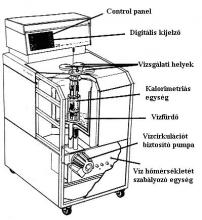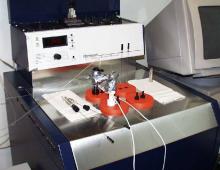Data provider
Budapest University of Technology and Economics, Department of Applied Biotechnology and Food Science, Environmental Microbiology and Biotechnology Group
Contact details
Compulsory sheet
Information on the method
Measured endpoint
Description of the measurement technique
Measuring range
- Metals, semi-metals and their compounds
Measuring range
- Pesticides
Measuring range
- Halogenated aliphatic organic compounds
Implementation conditions
Implementation costs
Innovation, main features
A Nematodák hőtermelésükkel válaszolnak a toxikus hatásokra, ez az új végpontmérési lehetőség gyors, pontos, a kiértékelést nem zavarja a talajmátrix.
Peszticiddel szennyezett talajokhoz javasuljuk a használatát.
A mikrokaloriméter nagy méretű és drága berendezés, fenntartása, használata szakértelmet és állandó karbantartást igényel. Ugyanakkor a modern mikrokaloriméterek akár 96 mérőhelyet is tartalmazhatnak, így 96 párhuzamos mérést tesznek lehetővé.
SWOT (evalaution based on scores)
SWOT (evaluation in words)
A mikrokaloriméter segítségével a teszt végpontja pontosan és automatizáltan detektálható.
A mikrokaloriméter egy nehezen hozzáférhető, nagy beruházást igénylő berendezés.
Több férőhelyes mikrokalorimáter toxikológiai célú felhasználása.
Other information, references
A tesztorganizmus kisebb koncentrációtarományban (még nem letális) hőtermelés növekedéssel válaszol, letális koncentrációk mellett viszont a pusztulás miatt hőtermelés csökkenéssel.
Gruiz és mtsai: Projekt Előrehaladási Jelentés: LOKKOCK GVOP 3.1.1.-2004-05 261/3.0, 2005-2006
Gruiz és mtsai: Kutatási Jelentés: MOKKA NKFP3/00020/2005, 2007
Bagi, A.: Talajtoxikológiai teszt fejlesztése nematódával, Tudományos Diákköri Konferencia, Budapest, 2006.
Completed applications
A tesztorganizmus gyorsan és pontosan követhetően reagál toxikus anyag jelenlétére a hőtermelés változásával.

